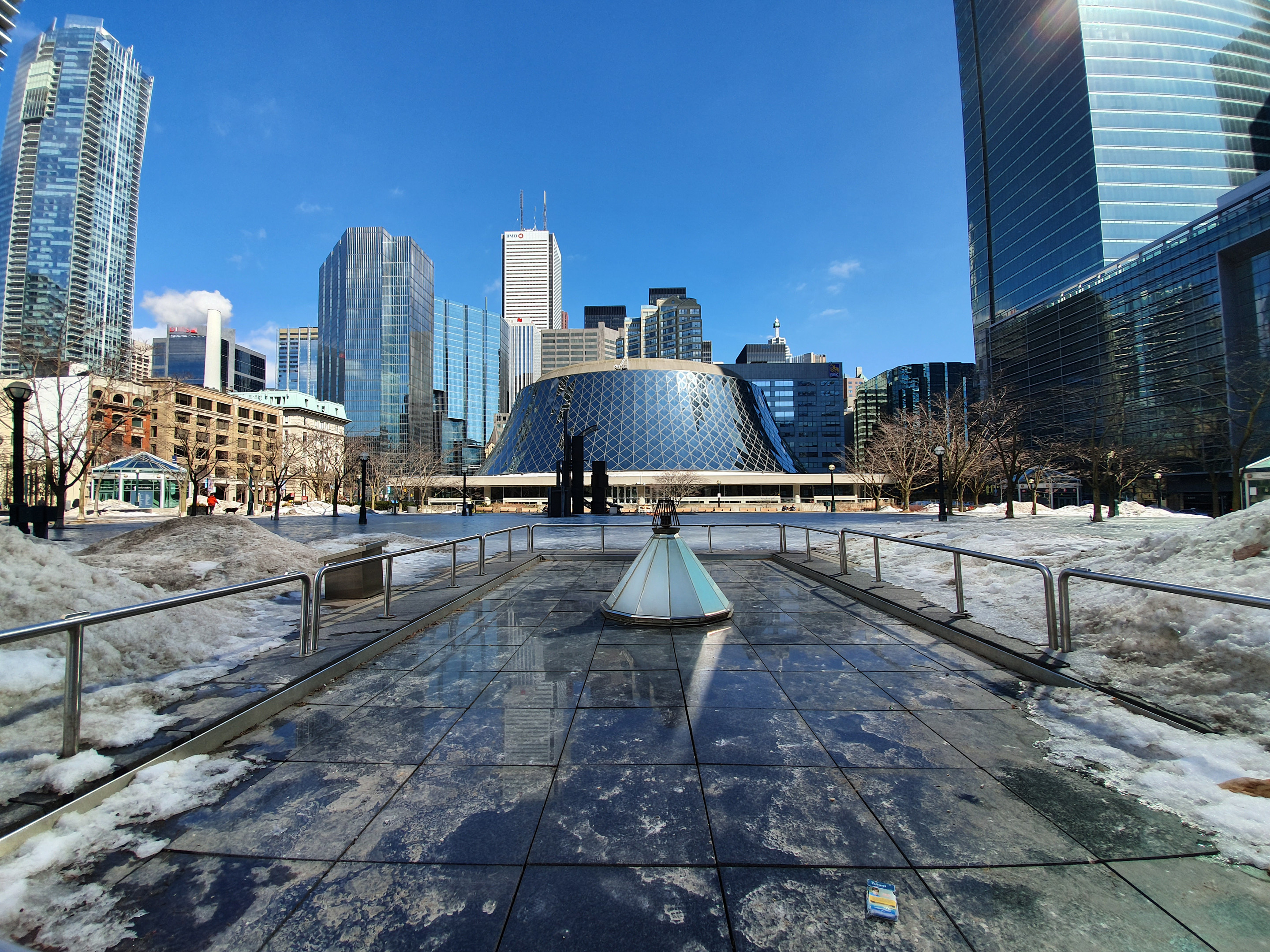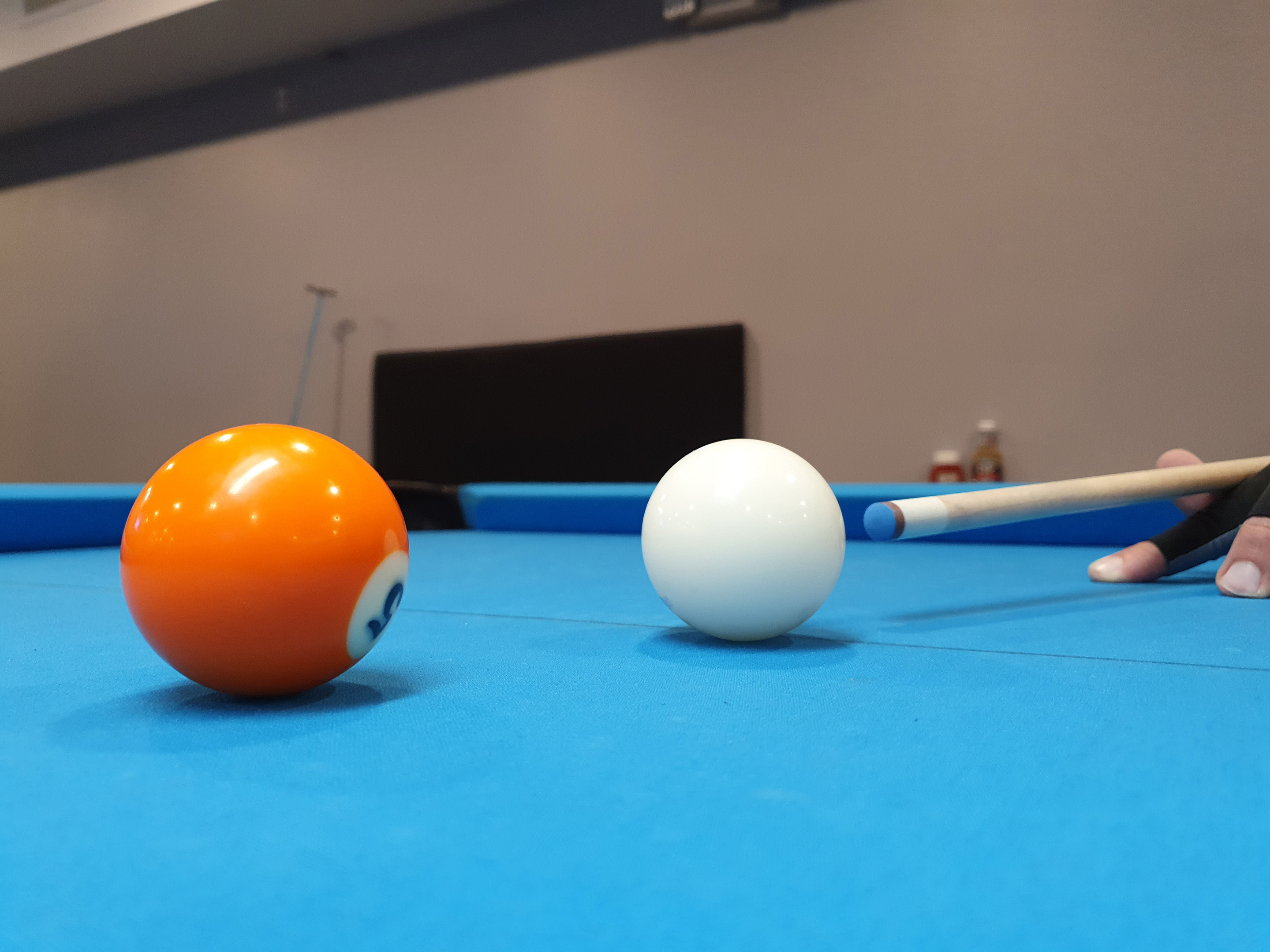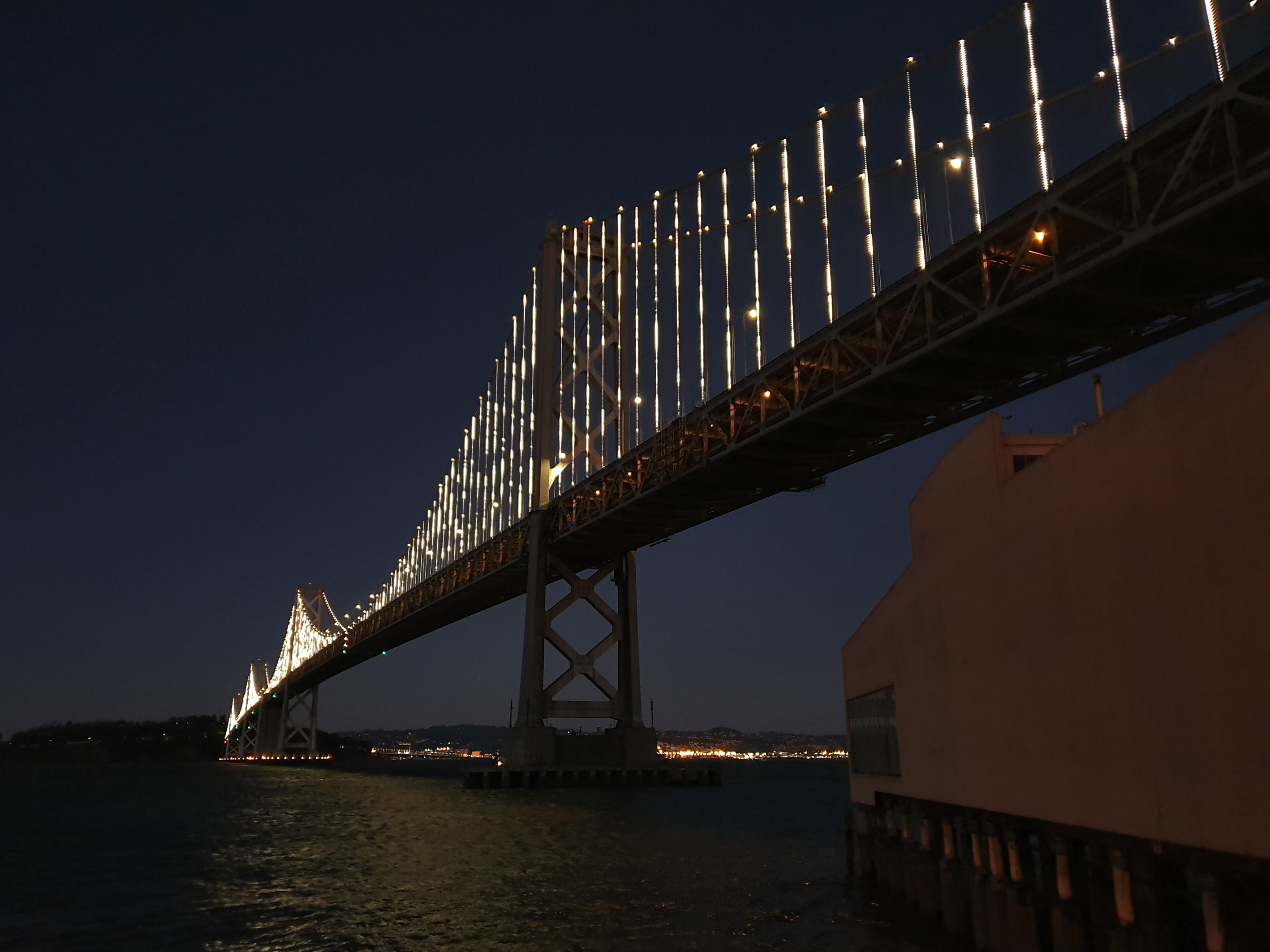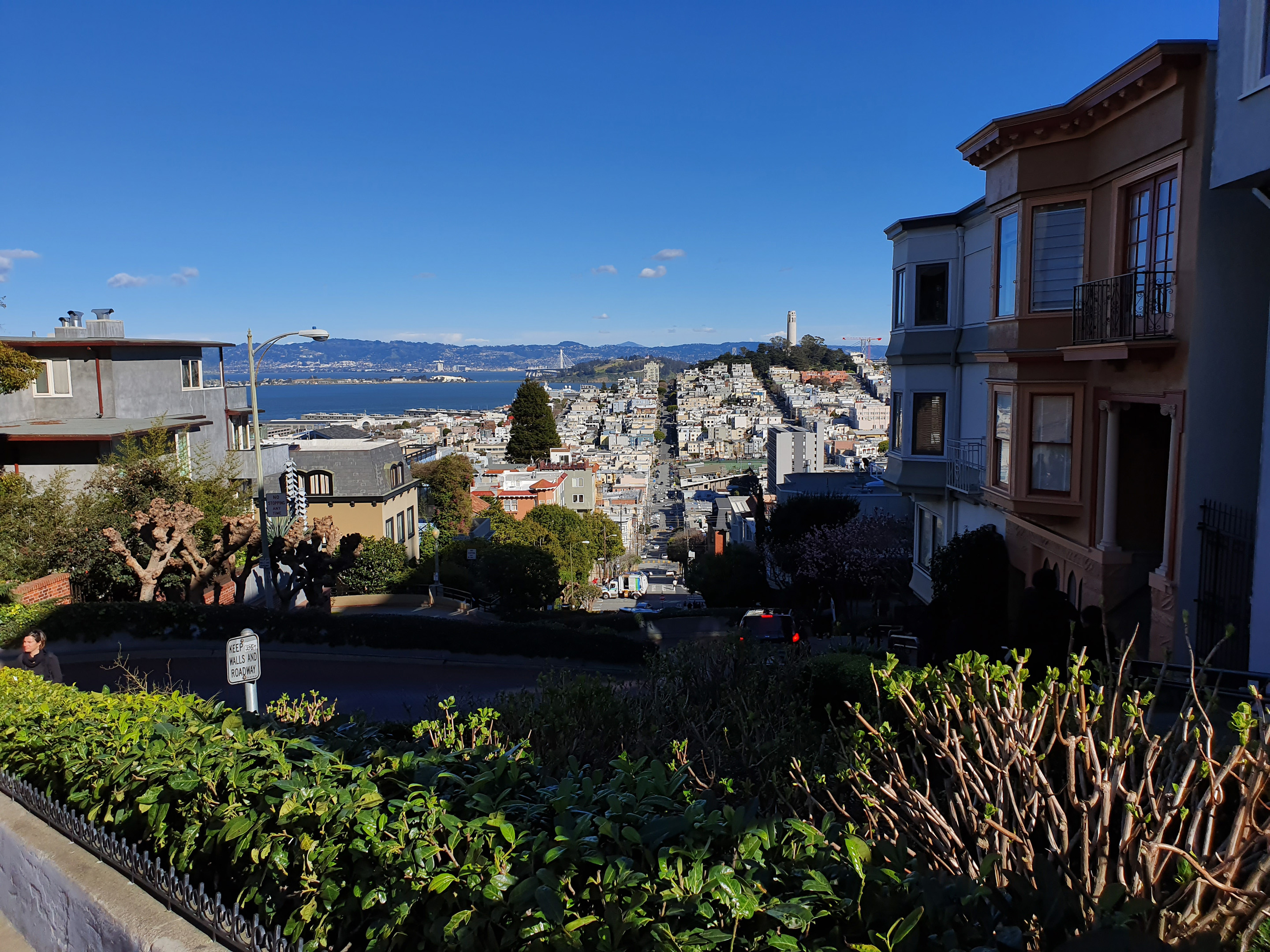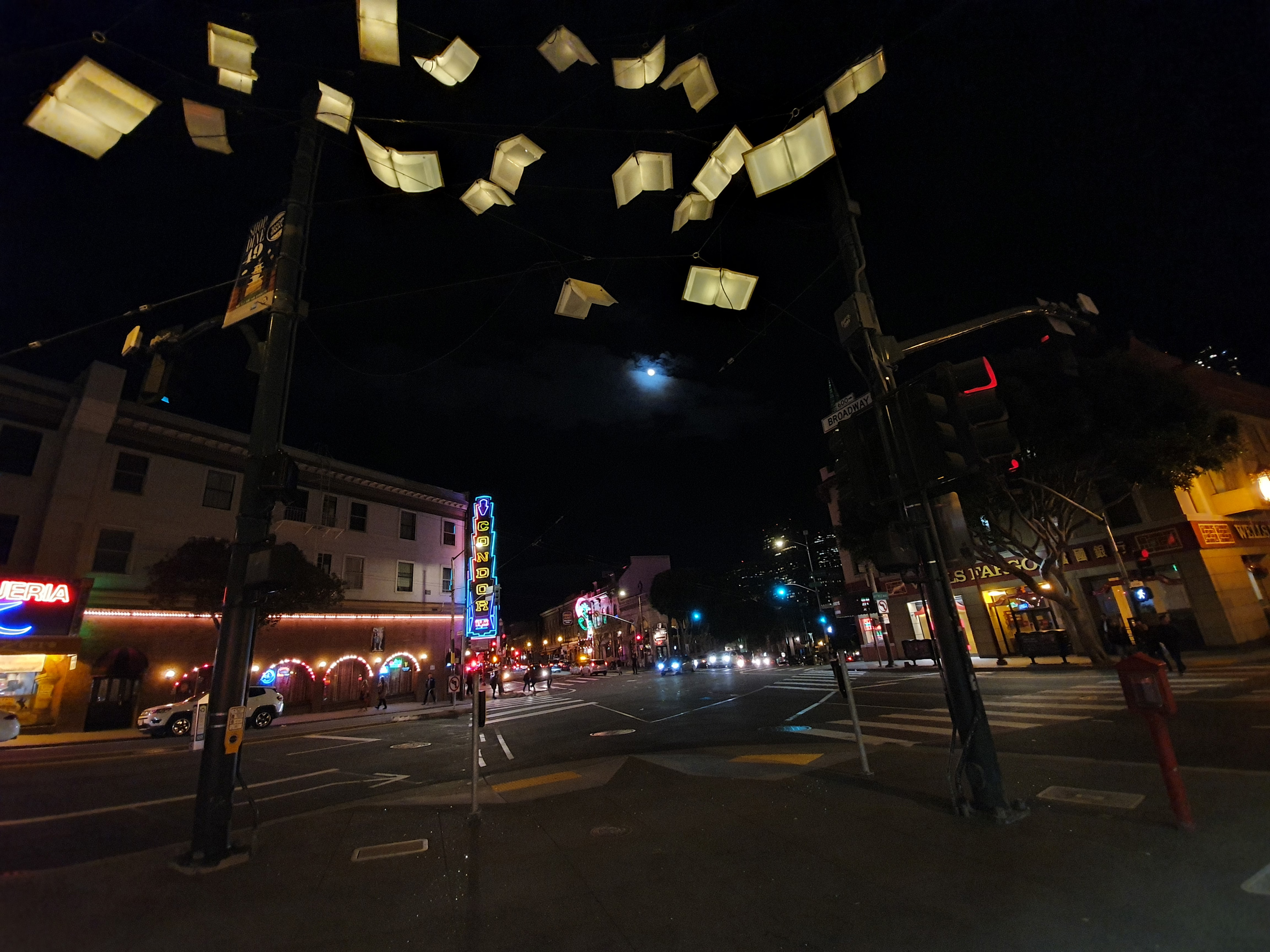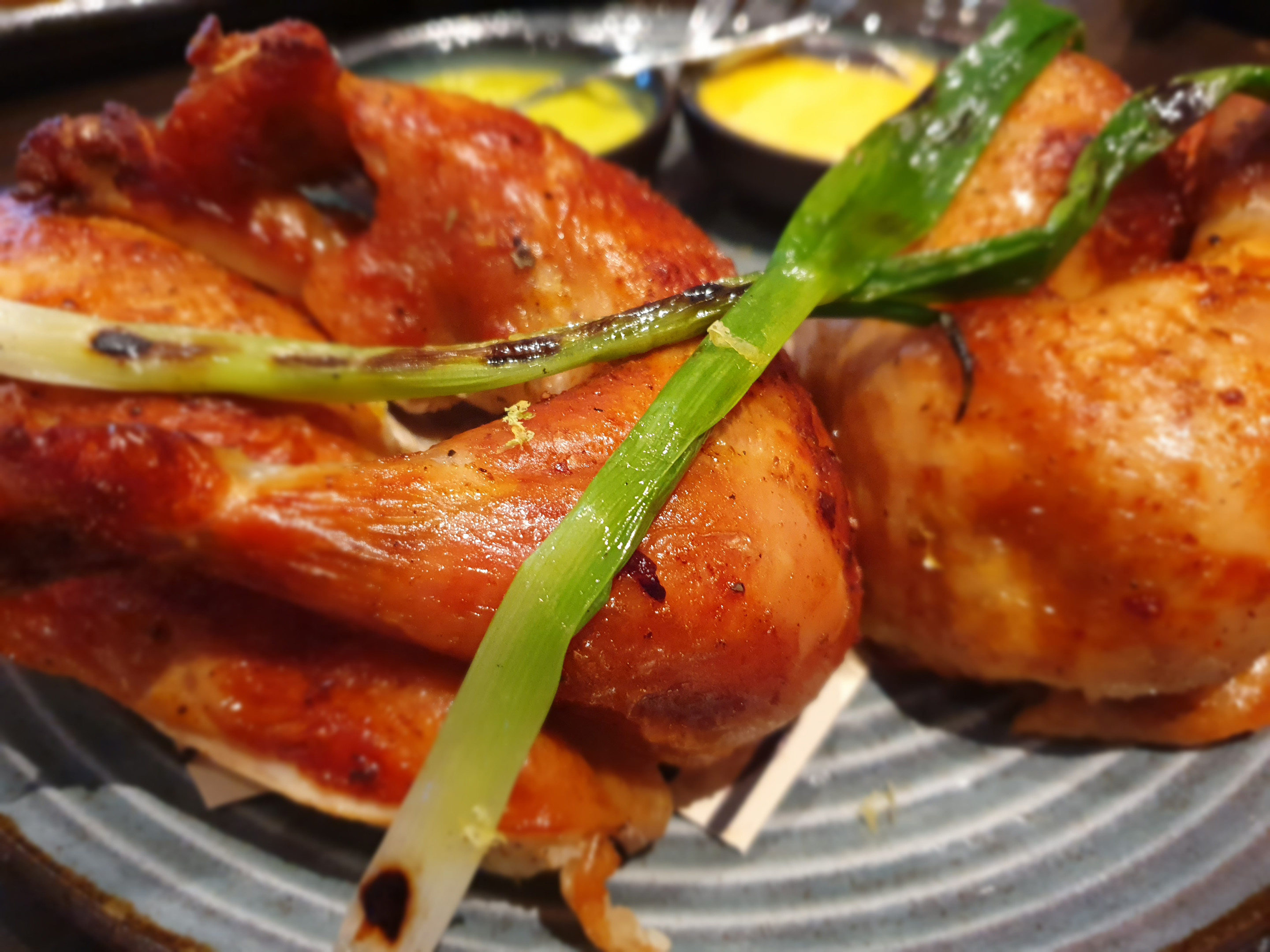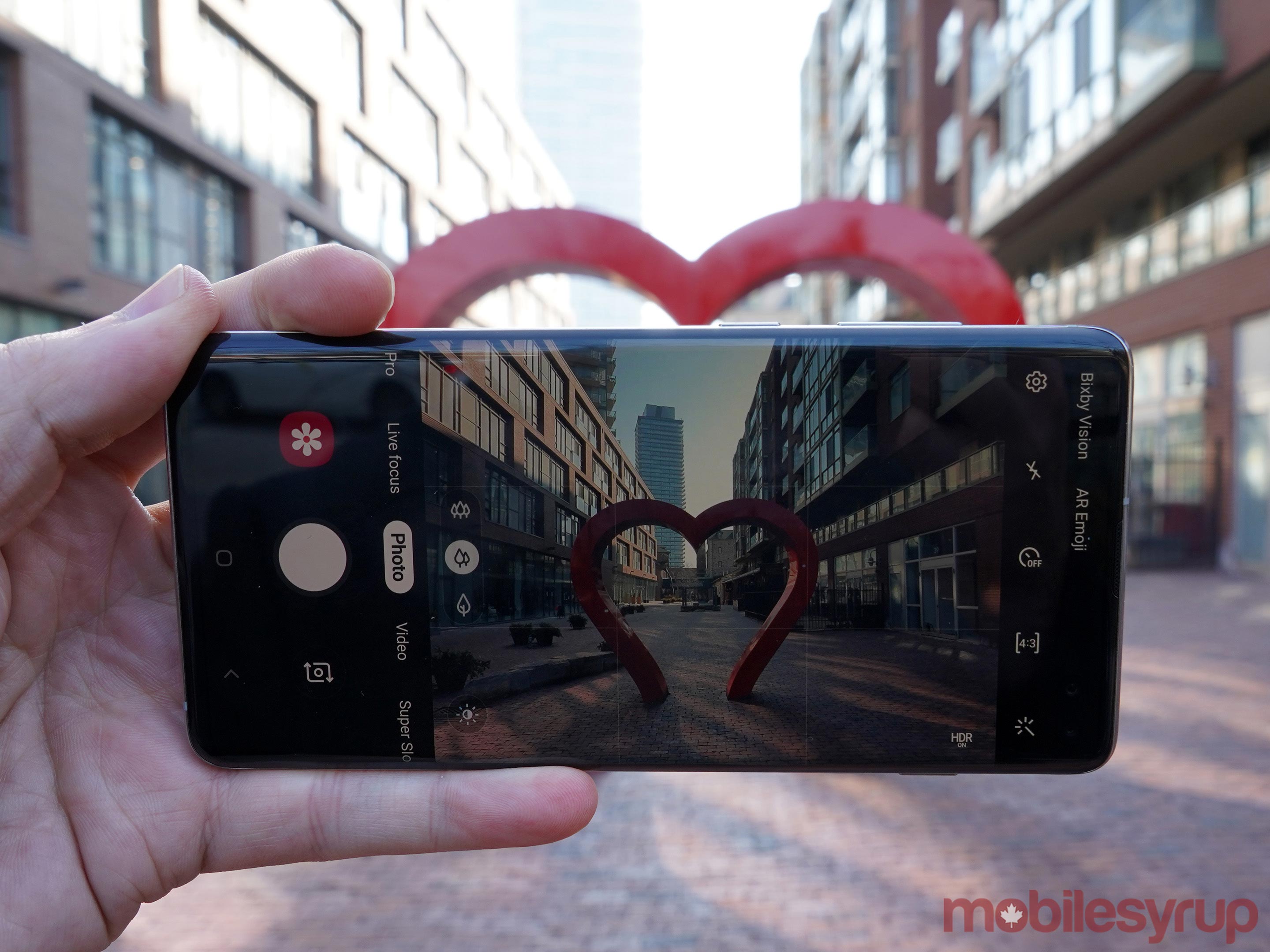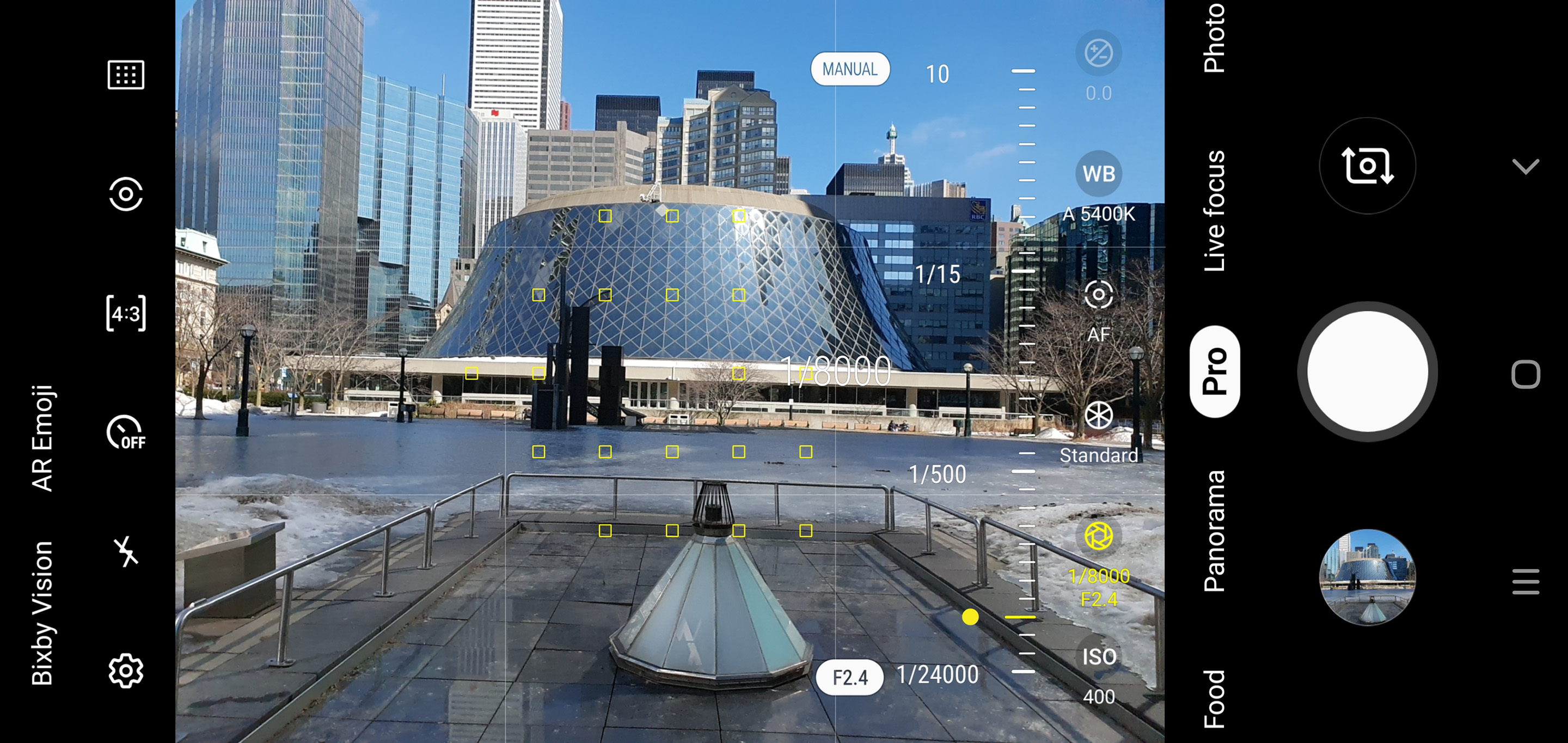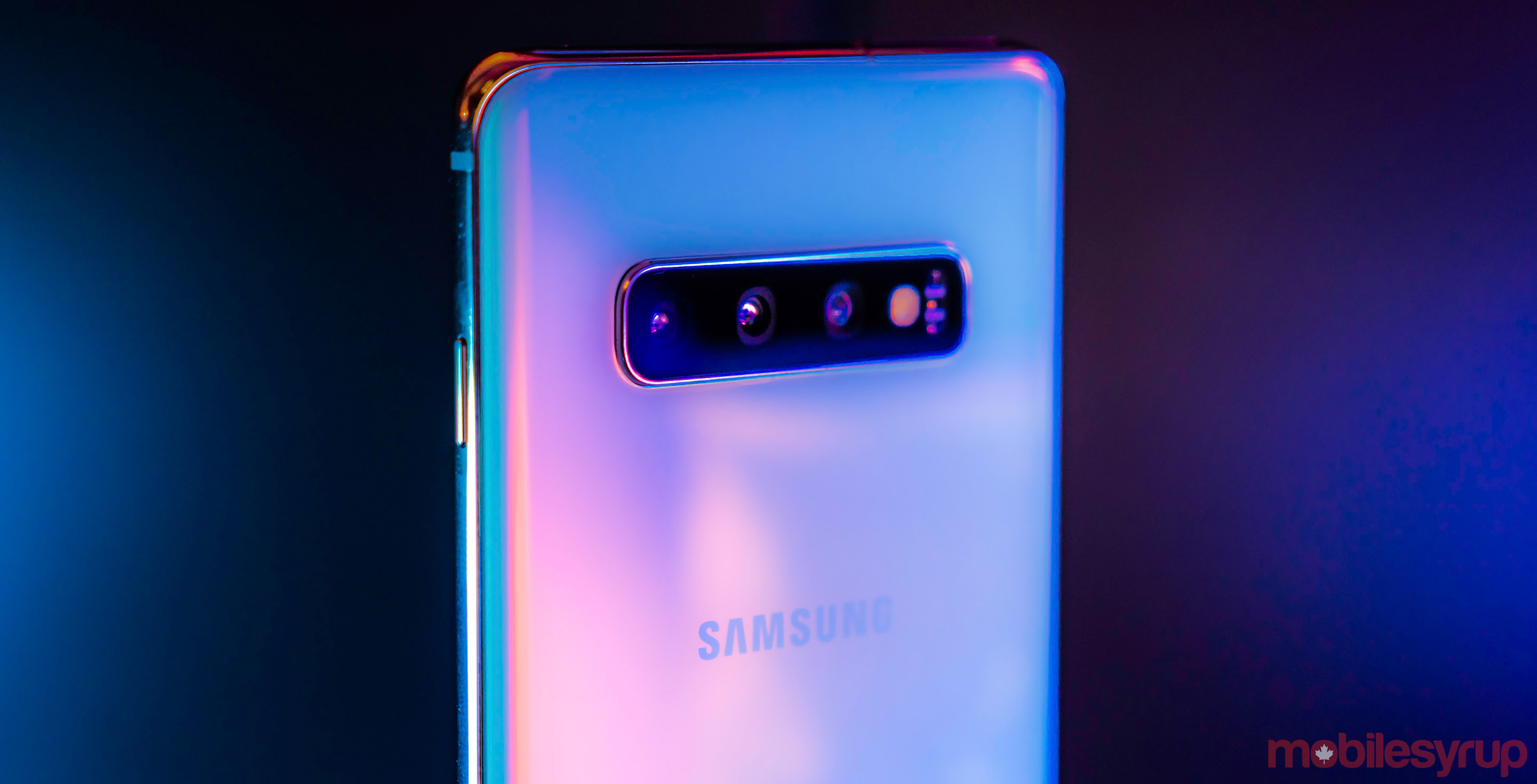
Samsung touted the Galaxy S10 and S10+ as ‘next-generation’ smartphones, including camera performance in that assessment. There’s little doubt these latest flagships feature stellar shooters, especially with three lenses on board, but engineers didn’t push the bar far enough.
By now, it’s easy to predict the basis for Samsung’s camera approach. Borrow from both the Galaxy S and Note lines, iterate, and add a big piece where possible. That piece is the third ultra-wide lens, which figures prominently beyond shooting with it standalone, as I’ll explain later.
What’s debatable is the pursuit toward better low-light photography. Google and Huawei have both raised the bar considerably in that regard. Apple failed to come close with its newest iPhone, and Samsung has opted not to let users try and close the gap for themselves.
There’s a night mode, but it’s an AI that only seems to work on the standard wide lens. It is something you can toggle on or off, but you can’t control it when shooting.
For the first time in the last few years, a combination of factors made a high-end Galaxy handset a challenge to shoot with. For all the other features and performance the phones have to offer, MobileSyrup’s Patrick O’Rourke covers all the those details.
What’s familiar — and different
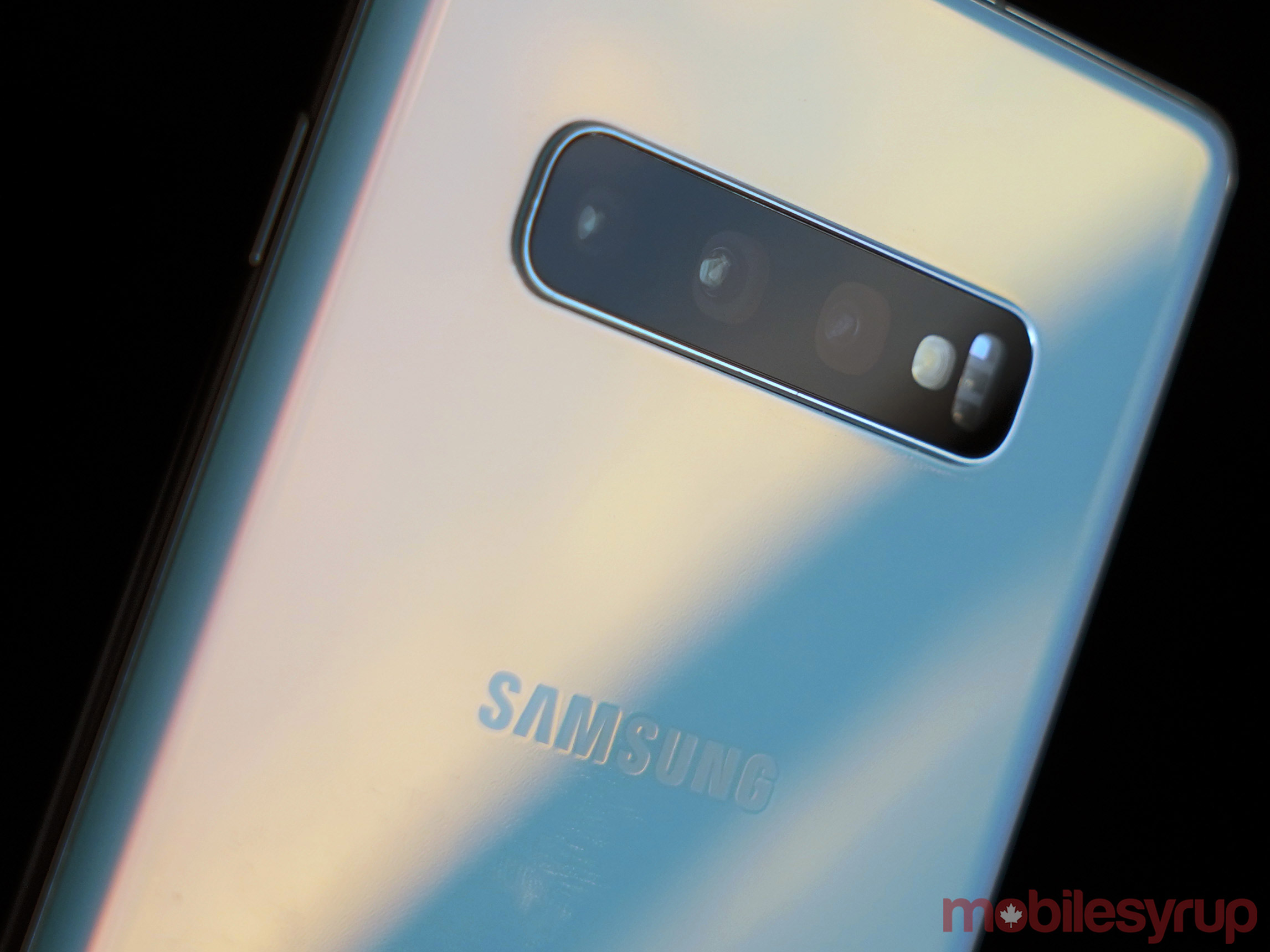
If Samsung used a different image sensor for its standard wide and telephoto lenses, it’s not immediately apparent. Both use 12-megapixel sensors, matching the size in the Galaxy S9+ and Note 9. The telephoto lens sticks to the 2x optical zoom, and you also get optical image stabilization in that and the standard lens.
The mechanical aperture is back with the same two stops: f/1.5 and f/2.4. Scene Optimizer returns to help identify scenery and subjects to compose photos better, though Samsung expanded it to 30 scenes (from 20) total in the S10/S10+. In case you’re wondering, the news ones are: Baby, Vehicle, Stage, Cat, Dog, Drinks, People, Clothing, Faces and Shoe. I’ll get to AR Emoji and Bixby Vision later, but those are back, too.
The Time of Flight (ToF) sensor that looks so promising for detecting depth of field in an image didn’t make it into these variants. Only the Galaxy S10 5G gets it. A ‘bright light’ AI was thrown in to help with low-light photos, except it’s not elective, nor is it evident when it’s working.
Then there’s the 16-megapixel ultra-wide lens, which shoots at 123-degrees. It’s definitely ultra wide, squeezing a lot into one frame. It’s a tighter aperture at f/2.4, and lacks the colour gamut of the standard lens. Despite that, Samsung chose to put it to work by using it in Live Focus and Super Steady mode for video.
Bokeh photos in the former are easier to shoot because of the wider frame, and you can get closer to a subject to get the effect. Super Steady mode lessens the shake and jitter shooting video by using the same lens, naturally reducing it because there’s no zoom at all.
HDR10+ also figures into video recording, though it’s off by default because not every device or app recognizes the HEVC format it saves files in.
What’s surprisingly stayed the same is the Super Slo-Mo mode, which continues to shoot clips at 720p, not 1080p. When other vendors are already doing that, it just seems like a waste.
Going wide
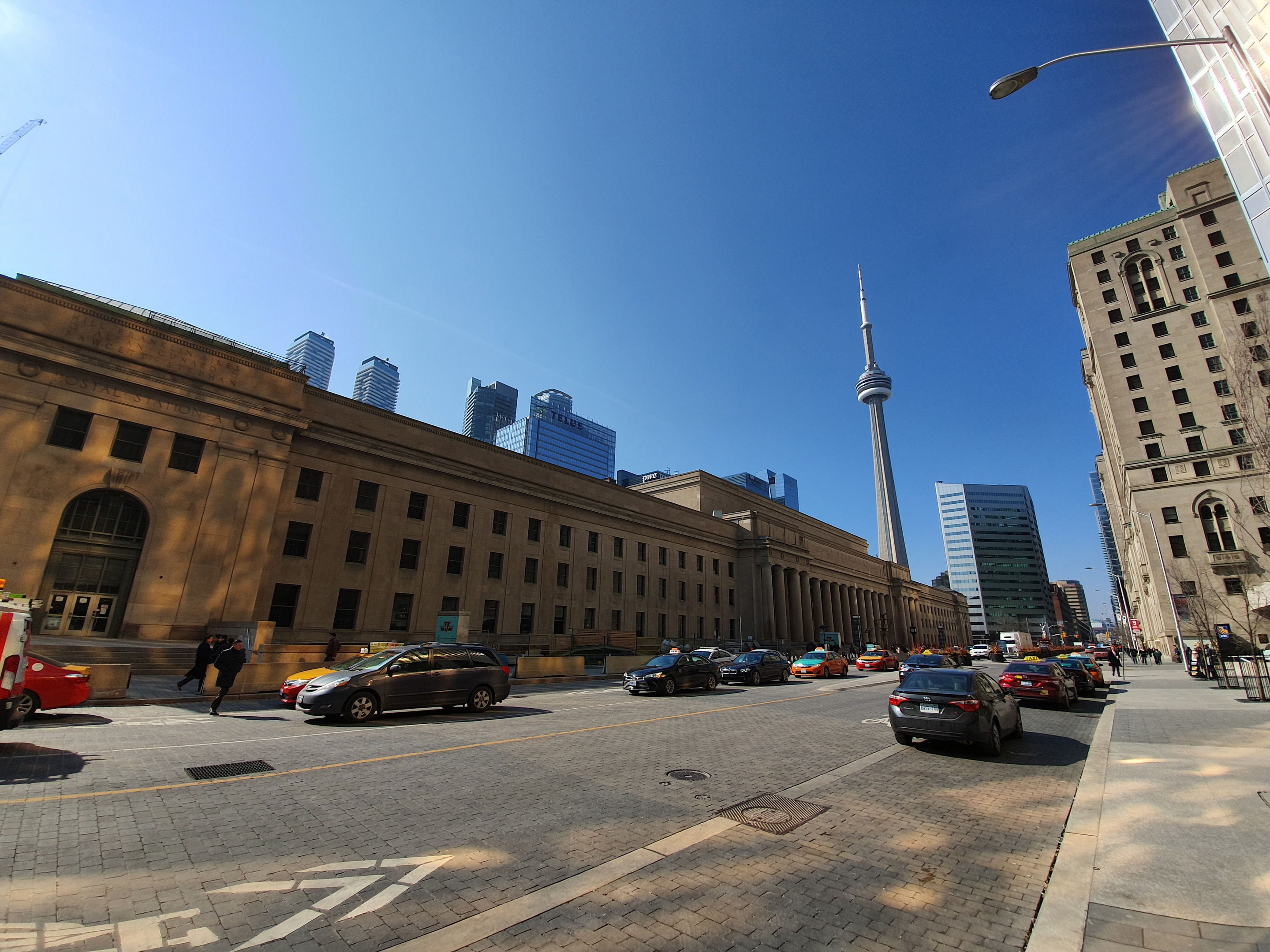
Samsung hyped the ultra-wide lens when it launched the Galaxy S10/S10+, when a little humility was really called for. LG offered it in the G5 back in 2016, and subsequently supported it ever since. Asus and Huawei soon jumped on the bandwagon. Now, it’s Samsung’s turn.
The good thing is that the lens comes with stellar optics and software to shoot with. While duller than shots with the other two lenses, I’d argue there’s more artistic licence available with the ultra-wide. Use it to shoot anything from a variety of angles and something cool is likely to come out of it.
My one gripe was that Samsung didn’t make it available to Pro mode — an inexcusable miss for a flagship device. Again, LG made that available starting three years ago with the G5, and Huawei most recently did with the Mate 20 Pro. To tout a phone’s photography prowess, yet limit access to the tools, makes for an otherwise avoidable nuisance.
Just to be clear, that also goes for the telephoto lens. Even when I tried switching lenses under the regular Photo mode, to then switch to Pro, it always relegated back to the standard wide lens. Scene Optimizer is also limited to that lens, meaning there’s no way to take advantage of any AI in either of the other two lenses.
This is a real shame because the ultra-wide lens is convenient to wield. Any scene too tight to shoot is a simple tap away. Capturing big groups or sizeable architecture is infinitely easier with such a wide angle. It’s just that there was little I could do with it in tougher conditions. The tighter aperture and smaller pixels already makes low-light shots hard, as is, but to lack any option to try and remedy that was disappointing.
Samsung made a smart move by adding the ultra-wide lens into the existing Panorama mode. Previously, panoramic shots were thin and wide, whereas they now include considerably more in the upper and lower portions of the scene. I’ve never been big on panoramic modes, but this one was pretty neat to test.
Digging deeper
Like Apple, Samsung seems to have taken the approach of trying to automate things, so users have less to tinker with or think about when snapping photos. Scene Optimizer is elective as a feature, though you have no control over it when you enable it. It seems to work reasonably well. It’s just that I couldn’t always be sure when it wasn’t. That’s not as intuitive as I’d like, personally.
It’s equally unclear to me if Samsung managed to get around the false positives issue I pointed out last year. If a subject or place has two scenes the AI recognizes, it may choose one over the other, leading to a poorer image. The resulting image should clue you in on whether to reshoot, but it is something to consider when focusing on a specific point.
To its credit, Samsung includes useful tools in the camera settings menu. Reordering the modes is convenient. In fact, you can hide whichever ones you want. Voice control is surprisingly good. Tracking auto-focus isn’t bad. Shooting in RAW is important for Pro mode. You even have the option to save images in HEIF format to save storage on your phone. Automatically flip selfies,

I liked ‘Keep using the last mode,’ for the simple fact it took me to Pro more often without having to swipe for it. Toggling that on also means it will keep it on the last mode you used when quick launching the camera from the lock screen or by double-clicking the power button.
Flaw detection is back, with no real performance boost. I found it more handy in the two moments it told me my lens was affected by smudges. It does catch blinking, albeit when eyes are fully closed. Anything less than that passes the censor. Shot Suggestion is also worth using if you’re not as comfortable composing a scene because it will indicate the best moment to shoot with a distinct yellow ball in the middle.
One thing I fail to understand is Samsung’s decision not to make the aperture accessible in Photo mode. You have to go into Pro to switch it first before shooting with it in Photo. It’s a needless step that can be costly when trying to quickly shoot something in both f stops.
Instagram mode, which is not available on the S10e, thereby making it exclusive to the other two, is a good idea that should gain some traction with the influencers of the world. It’s particularly useful for posting stories directly to the platform, though you must have the Instagram app installed and be logged in.
Image quality

It’s a testament to how good a camera is when it doesn’t move the needle forward enough, yet still stands out as one of the best phones to shoot with. That has more to do with carrying over legacy than innovating to push the envelope.
The Galaxy S10/S10+ shoots a lot like the Note 9 and Galaxy S9/S9+ do, save for the extra lens and its role in other modes. I’m not referring to the familiarity of the interface or the modes, just the output. There is a marginal improvement in low-light shots (when shot with the standard wide lens), but not enough to match what the Pixel 3 and Mate 20 Pro are able to do with their dedicated night modes.
For the most part, I’ll take a night shot from the Galaxy S10/S10+ over an iPhone XS, but the gap between them should be wider. Samsung was already doing better, yet didn’t burst ahead like it could have. Without changing the image sensor or expanding the micron pixels, software had to do the heavy lifting. Bright light would have been more intriguing if Samsung gave shooters a greater level of manual control over it, not unlike Huawei’s Night mode.
![]()
Despite my gripes on that, I can trust to get good photos in a vast majority of scenarios, especially for static subjects. There are no weird sharpening effects kicking in, and Photo mode holds up well in daylight or well-lit shots. Scene Optimizer seems to do its job, though I found when conditions are already ideal, there was little difference when it was turned on or off.
Pro mode is still the benchmark for me, while Food mode needlessly blurred too much of an image for what appeared to be dramatic effect. I found Live Focus to offer a softer tone for dishes, with more natural colour to boot. If you’re a self-professed ‘foodie,’ those modes are worth experimenting with.
For selfie lovers, dual cameras on the front (for the S10+) produce Live Focus images, too. I’m not one for selfies, so I didn’t really make use of it, but the effect will probably be more effective on the S10+ over the S10, which only has one front lens.
Video, fast and slow
Super Steady mode promised to reduce or eliminate shaky clips, thanks to a combination of factors. The sensor captures a 115-degree field of view, but the output video is ultimately cropped to 75.6 degrees, which enables the VDIS (virtual digital image stabilization) to align the frames.
The result is a clip that is far steadier than it otherwise would be. It makes sense because the ultra-wide lens doesn’t have OIS, so digital stabilization fills in instead. Clips are okay, but using the wider lens dulls the colour and limits contrast.
That, and HDR10+ are the only major changes to video. They’re not insignificant, mind you, since HDR10+ can certainly make clips look better. You just have to make sure they’re playable on whatever device you share them with. I had run into this problem when LG supported HDR video with the G7. For example, I shot a clip with HDR10+ and tried to share it on Instagram after, only to be forced to convert it in the Gallery app before I could do so.
I would love to see Pro mode controls for video, like LG has done for years, along with the option to shoot in 24fps. Samsung has shown little appetite to offer them.
Super Slo-Mo mode really needs a resolution boost. It’s a cool thing to show off, but any drop in lighting becomes a snowfall of grain, rendering the mode moot in a variety of situations.
AR Emoji, something Samsung hyped a lot when it launched the S9 last year, barely got a nod at the keynote launch. The company’s engineers tried to make it more interesting, adding masks, body motions, extra facial details and improved tracking, but the mode still needs work. We’ll see if AR World, a marketplace to download more custom choices, makes a difference.
Bixby Vision
Bixby Vision is back, but it comes with a big caveat. When first setting it up, there’s a user agreement featuring a list of partners. You have to agree to all of them to get Vision’s full performance gamut and the functionality those partners offer. I was hesitant because I’m not fond of Foursquare nor the food portion of the agreement.
As a result, the feature didn’t work when trying to recognize places or measure calories in a dish. Vision has always been a bit hokey to me anyway, but I didn’t mind it as much for translating text. Still, I could use Google Lens to do the same thing, in that instance.
Familiar ground
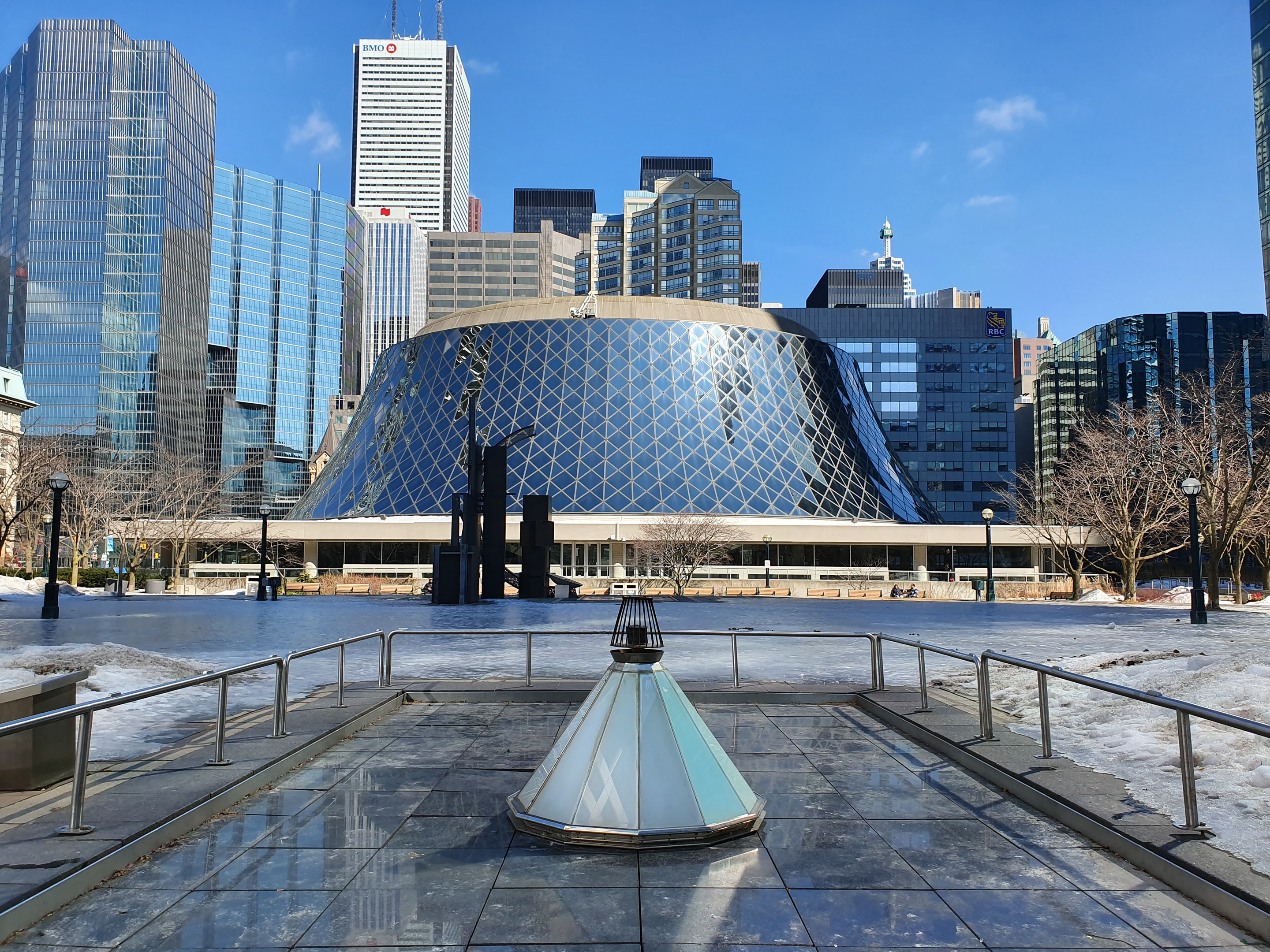
The Galaxy S10/S10+ camera came off to me as a cautious, if not complacent, collection of features and output. No doubt that adding the ultra-wide lens changes how you can shoot, but Samsung didn’t go far enough to integrate it.
Nor did it do that for modes and features that could’ve made a bigger difference. Google can advertise the Pixel 3 specifically for its low-light shooting. Samsung simply can’t, nor shouldn’t, based on what’s in here.
It’s still early in the year, and I suspect the S10 camera’s lustre will start to weaken as competitors vie for supremacy. When the Note 10 launches six months from now or so, it will be interesting to see if Samsung learned a few lessons and upped the ante.
MobileSyrup may earn a commission from purchases made via our links, which helps fund the journalism we provide free on our website. These links do not influence our editorial content. Support us here.



